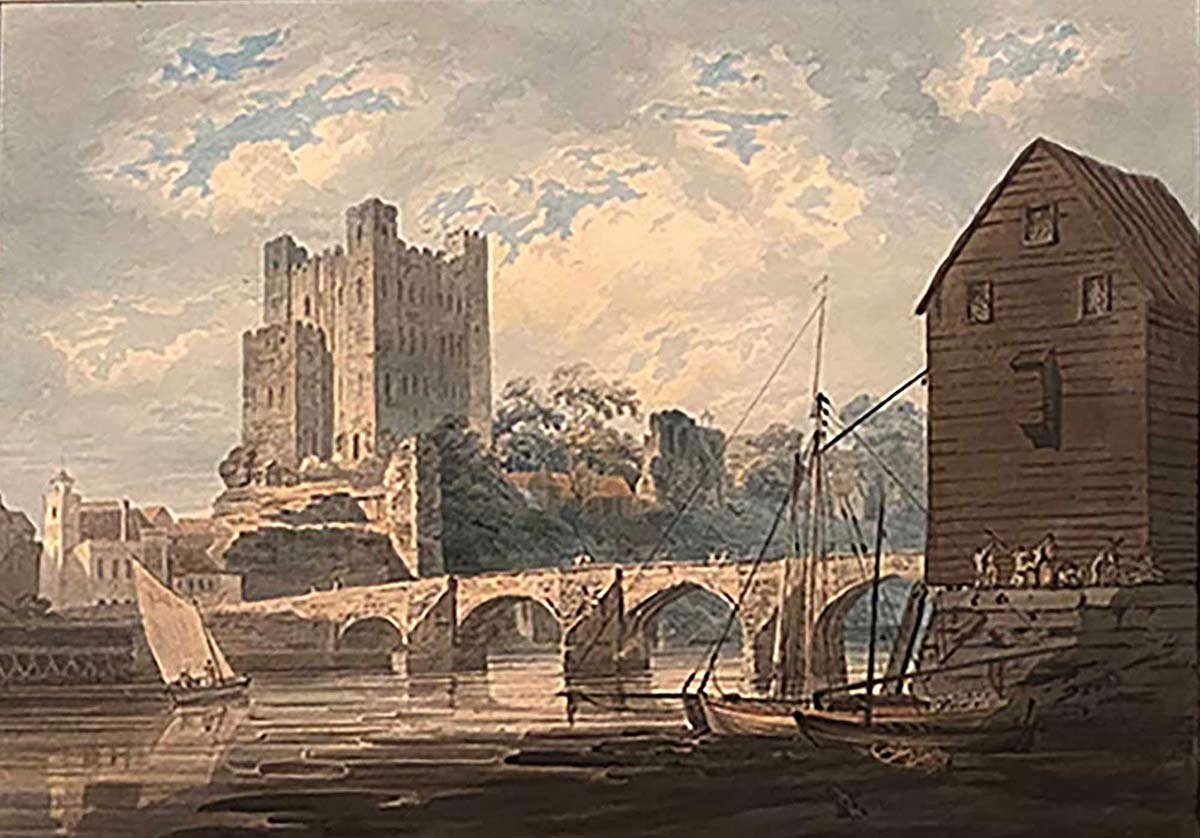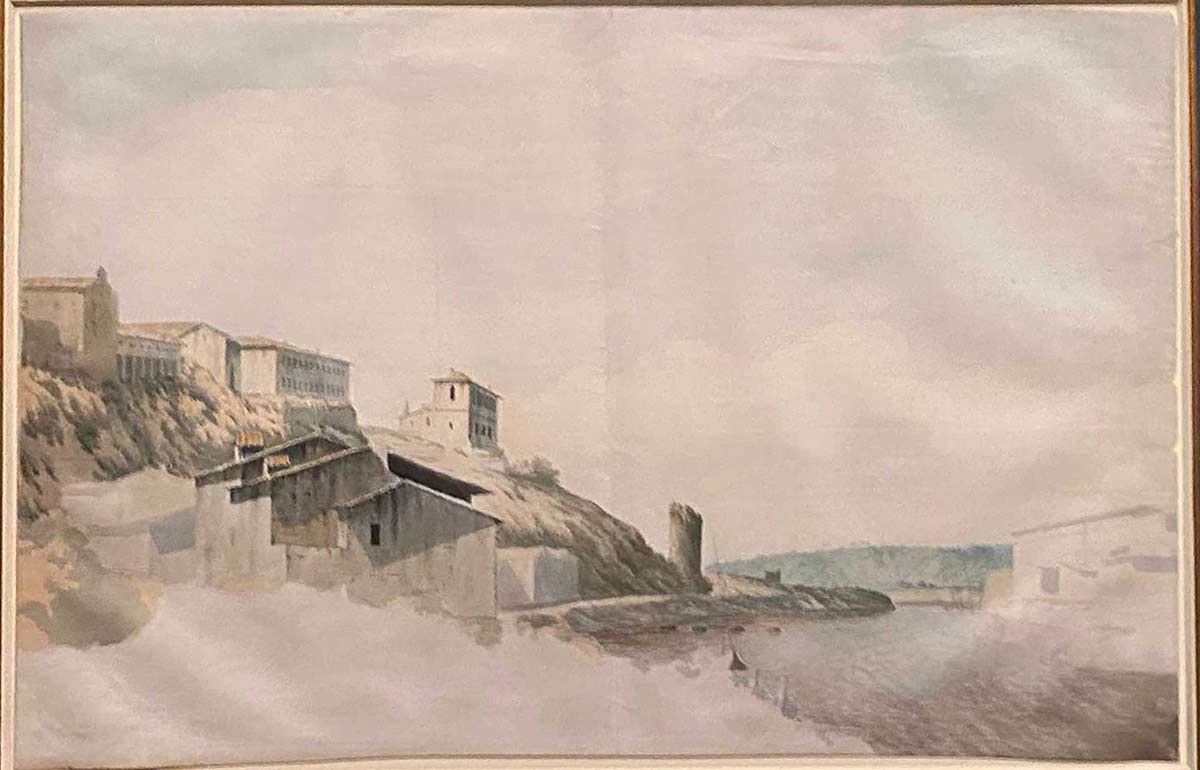
MFAH show highlights birth of British landscapes
The Museum of Fine Arts, Houston presents “Picturing Nature: The Stuart Collection of 18th- and 19th-Century British Landscapes and Beyond” through July 6. Houstonian Francita Stuart Koelsch Ulmer endowed the museum with a gift, in honor of her parents, to build a collection of British landscapes from the period.
Curator Dena Woodall has collected works from artists Richard Wilson, Thomas Gainsborough, John Robert Cozens, John Constable, J.M.W. Turner and many more in the 70-piece exhibition.
Landscape painting in British culture was not common until after artists from the Netherlands brought their art pieces to England in the late 16th and early 17th centuries. The landscapes of the Netherlands and the new trend toward cartography formed Britain’s own movement of natural landscapes painted with watercolors, oils and even chalk.
Stepping into the gallery of landscapes feels like opening a time capsule to the past, allowing one to ogle at how the landmarks looked before natural erosion and urban development altered them.
Constable’s “A View on the Banks of the River Stour at Flatford” features the corn mill where his father worked, coated in dark and foreboding rain clouds. The painting illustrates a stunning contract of gloomy clouds with sunlight peeking out through the gaps.
“Rochester Castle from the River Medway,” is one of Thomas Girtin’s standout works, made when he was 16-years old. The skyline of clouds swirling above the landscape is realistic and beautiful, with an amazing rendition of Rochester Castle and the scenery around it. It is as if we are looking at a photograph of the real thing.
Paul Sandby’s “Saint Albans Abbey from the Northwest with the Sun Rising” features two figures watching the sunrise over Sandby’s home. The painting uses opaque watercolors to create dramatic lighting with a higher saturation. One’s eye is naturally drawn to the stream of sunlight in the painting’s center and the pastel pink clouds stretched across the sky. It is truly a sight to behold.
William Day’s “Cavern (Thor’s Cave, Staffordshire)” offers a unique perspective on the entrance of Thor’s Cave in Ashbourne, England. The painting was originally labeled to suggest a horizontal image of the cavern’s entrance. However, through examination, Woodall found the image is actually a vertical rendition. The formation of the rocks are clustered together, which feels like a dome trying to seal the viewer in, save for the cracks of sunlight in the corners.
However, not all of the British artists stayed in the comfort of their homes. By the late 1700s, many traveled to Italy, Rome, The Netherlands and Greece combining their topographical landscapes with a new inventive style. John Warwick Smith’s “Lake in North Italy (Lake Como)” is divided in horizontal sections of sky, land and lake, with the translucent watercolors evoking the scenery. The blues on both the top and the bottom help the land pop in a beautiful display.
Thomas James’ “The Aventine from the River Tiber, Rome” has landmarks stretched across the left with the open vast sea on the right. The foreground was left to paint at a later time but was never truly finished. However, this unfinished section of the piece sets it apart from his other works, making it stand out on its own.
Joseph Mallord William Turner’s “A Distant View of Chambéry, from the North, with Storm Clouds” is an abstract landscape of the Alps mountain range. The mix of the light blue on top with the stronger tones of yellow and green are a fantastic combination of colors. Even in its abstract nature, one can easily find the cascading mountains from a distance.
Edward Leer’s “Mount Olympus from Larissa, Thesaly, Greece” is a stunning landscape of the mountain, said to be home to the deities of Ancient Greek mythology. The layers of brown and gold cover the terrain, with shades of soft pink near and on the mountain. The little touches of cattle drivers and figures in the distance are a nice touch of detail.
“Picturing Nature: The Stuart Collection of 18th- and 19th-Century British Landscapes and Beyond” is a wonderful and eye-opening experience, recommended for anyone interested in seeing how artists capture what they love about the world.
For more information, visit mfah.org.
A rainstorm passes over the banks of the River Stour, near a corn mill. This is where renowned British artist John Constable painted one of his many watercolor landscapes. The piece inspired a decade long process of building a collection.



